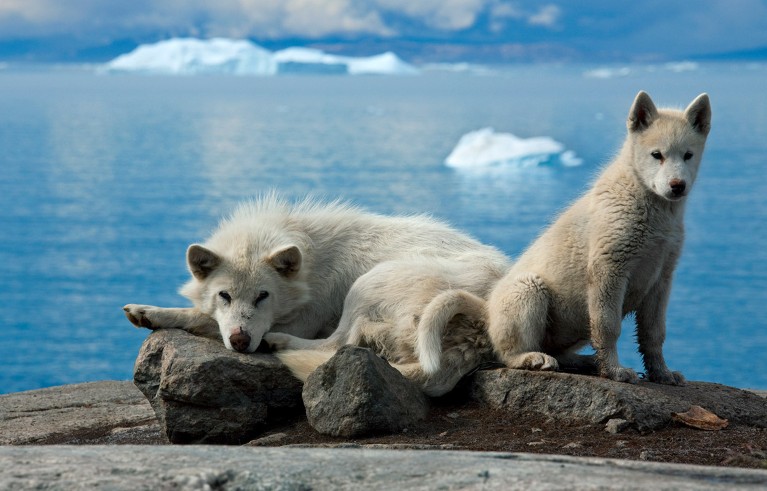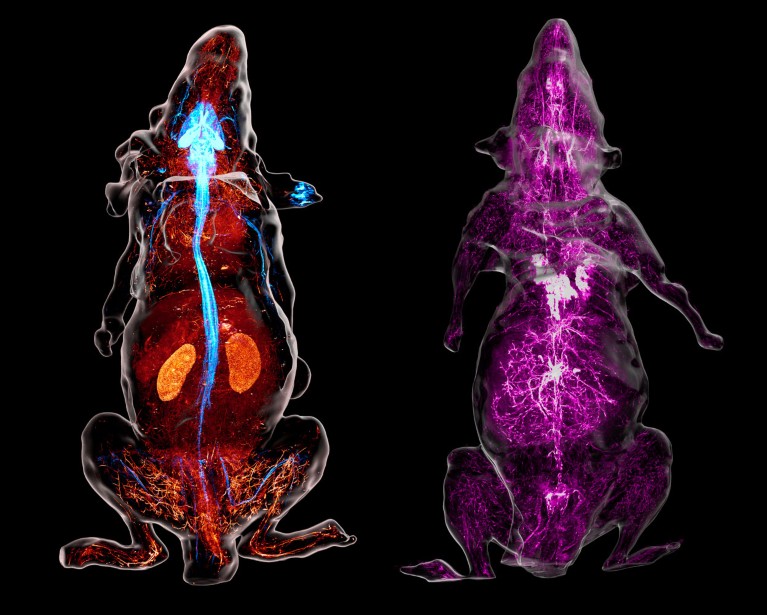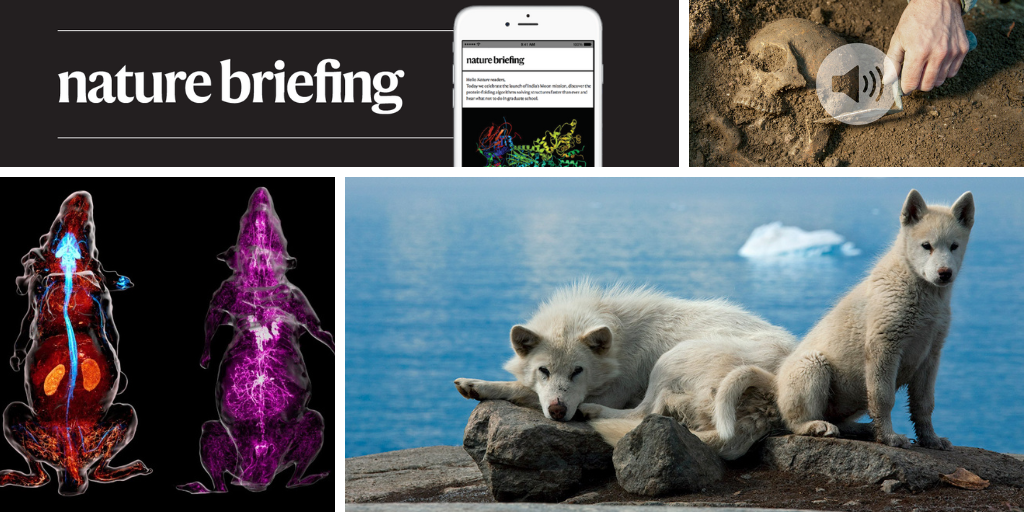You have full access to this article via your institution.
Hello Nature readers, would you like to get this Briefing in your inbox free every day? Sign up here.

Despite their wolf-like appearance, Greenland dogs do not have especially high levels of wolf DNA.Credit: Arterra/Universal Images Group via Getty
Qimmit — a type of sled dog that has been kept by Inuit in Greenland for nearly 1,000 years — don’t share much DNA with wolves, despite a reputation for having been interbred. Researchers collected samples from dog remains at archaeological sites, in museum collections and from items of clothing that were up to 800 years old. Using the dogs’ development as a proxy for people’s movement, the researchers found that Inuit probably settled the island up to 200 years earlier than was previously thought.
A drug that targets two parts of the deadly Nipah virus can both temporarily prevent infection and can stop the virus becoming treatment-resistant after infection. The drug is a combination of an immune protein called an antibody and a nanobody — a small fragment of an antibody — isolated from an alpaca called Pedro. The combi-drug protected hamsters from infection with the Nipah virus for 28 days. If given one day after infection, the treatment was 50% effective at preventing disease and delayed death by four days.
Reference: Nature Structural & Molecular Biology paper
On Tuesday, researchers held a symbolic ‘science fair’ in Washington DC to protest the cuts to science funding by the administration of US President Donald Trump. The Things We’ll Never Know: A Science Fair of Canceled Grants was organized to highlight the damage from the cuts to the public and to other policymakers. Researchers presented posters on how their terminated projects might have benefited society, but many were more upset about how the lost funding might affect young scientists than they were about the end of their own projects.
Image of the week

Nerves look blue in the reconstructed view of a genetically engineered mouse (left) whose neurons produce a fluorescent marker. In a separate animal (right), antibodies detail the sympathetic nerves (purple). Credit: M.-Y. Shi et al./Cell (CC-BY-4.0)
A new imaging technique is revealing the wiring across a mouse’s entire body. The scans, taken with a custom-built microscope, can map the nerves running from a mouse’s brain and spinal cord to the rest of its body at micrometre-scale resolution, revealing details such as individual fibres travelling from a key nerve to distant organs. Here, the nerves of one genetically engineered mouse (left) are tagged with a fluorescent marker (blue) and fluorescently labelled antibodies (purple) detail the sympathetic nerves of another mouse (right). (Nature | 4 min read)
Reference: Cell paper (M.-Y. Shi et al./Cell (CC-BY-4.0))
Features & opinion
The final round of negotiations on a United Nations treaty on plastics pollution is now less than a month away, notes a Nature editorial. Discussions are taking place in an increasingly polluted world: on the current trajectory, the amount of new plastic created each year is expected to double by 2050, with efforts to reduce it hindered by a group of oil-producing nations that wish to focus on recycling and consumption. But others — including the European Union, Australia, Canada and the United Kingdom — are pushing for curbs on production and ground rules for better regulation. And groups of countries have been starting to act independently.
“Two studies published this week in Nature should leave negotiators in no doubt about the urgency of the situation,” says the editorial. In one study, researchers used sophisticated mass-spectrometry techniques to discover a worrying prevalence of ‘nanoplastics’ — particles measuring less than 1 micrometre in diameter — in the ocean. These “are able to pass through cell walls, meaning that they are already incorporated into the ocean phytoplankton which serve as the base of the marine food web”, says environmental scientist Tony Walker. The other study found that plastic production involves 4,200 ‘chemicals of concern’ — those that do not naturally break down in the environment, for example, or that are toxic.
Nature editorial | 5 min read & Nature news | 5 min read
Reference: Nature paper 1 & Nature paper 2
The child of a ‘hero scientist’ grapples with the impact of their father’s work in the latest short story for Nature’s Futures series.
The advent of livestock farming introduced a host of new infectious diseases to humans, including plague and leprosy. An analysis of DNA extracted from the teeth of ancient human remains allowed researchers to map out the history of diseases present in Eurasia over thousands of years. The study revealed that DNA from animal pathogens was only present in remains that were around 6,500 years old or less, around the time humans started living in close proximity with farm animals.
Nature Podcast | 37 min listen
Subscribe to the Nature Podcast on Apple Podcasts, Spotify or YouTube Music, or use the RSS feed.
Today, Leif Penguinson is taking a tour of Postojna Cave, Slovenia. Can you find the penguin?
The answer will be in Monday’s e-mail, all thanks to Briefing photo editor and penguin wrangler Tom Houghton.
This newsletter is always evolving — tell us what you think! Please send your feedback to [email protected].
Thanks for reading,
Flora Graham, senior editor, Nature Briefing
With contributions by Jacob Smith
• Nature Briefing: Careers — insights, advice and award-winning journalism to help you optimize your working life
• Nature Briefing: Microbiology — the most abundant living entities on our planet — microorganisms — and the role they play in health, the environment and food systems
• Nature Briefing: Anthropocene — climate change, biodiversity, sustainability and geoengineering
• Nature Briefing: AI & Robotics — 100% written by humans, of course
• Nature Briefing: Cancer — a weekly newsletter written with cancer researchers in mind
• Nature Briefing: Translational Research — covers biotechnology, drug discovery and pharma


